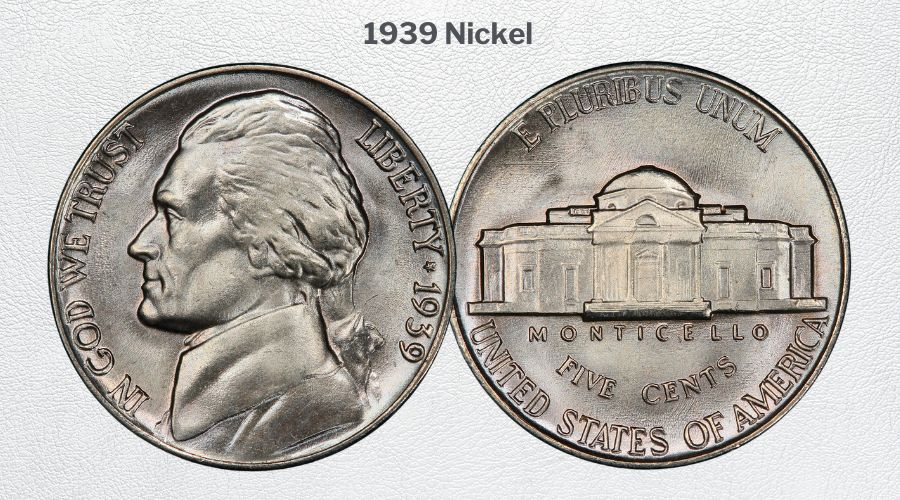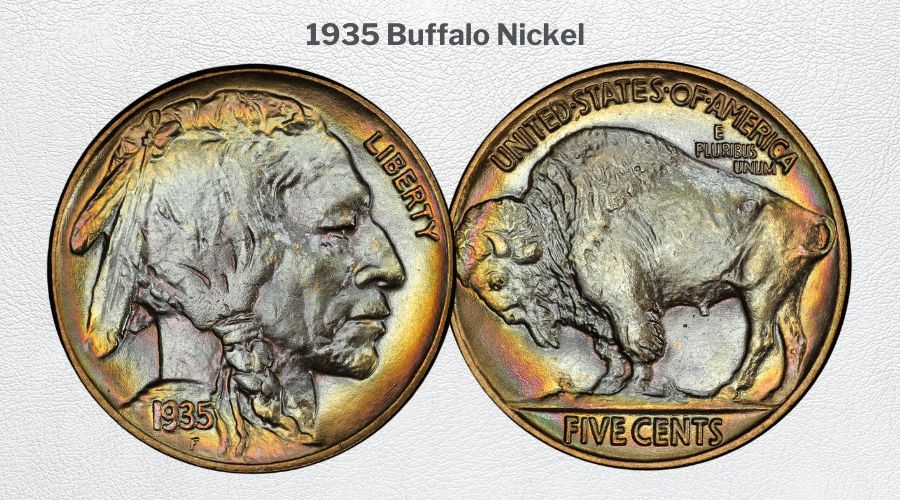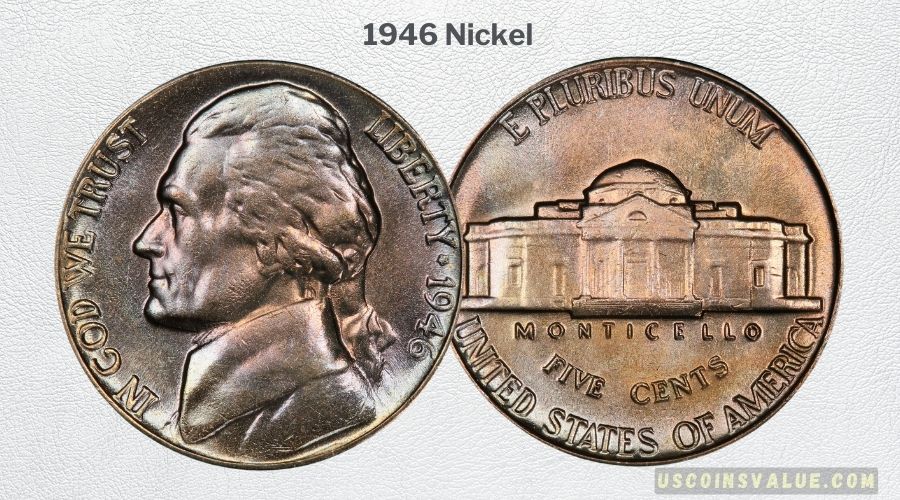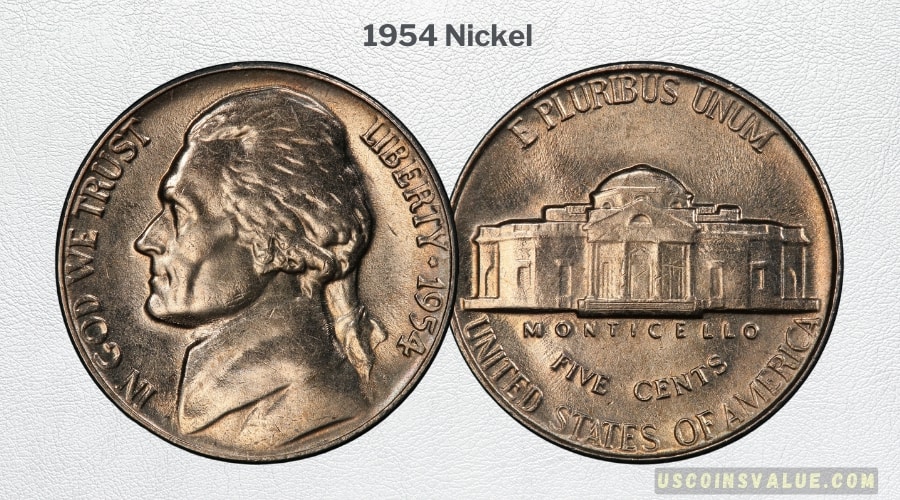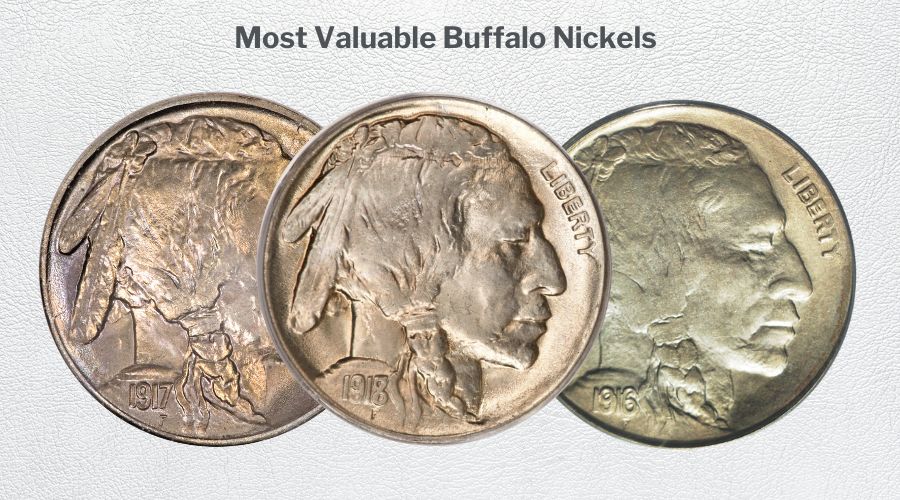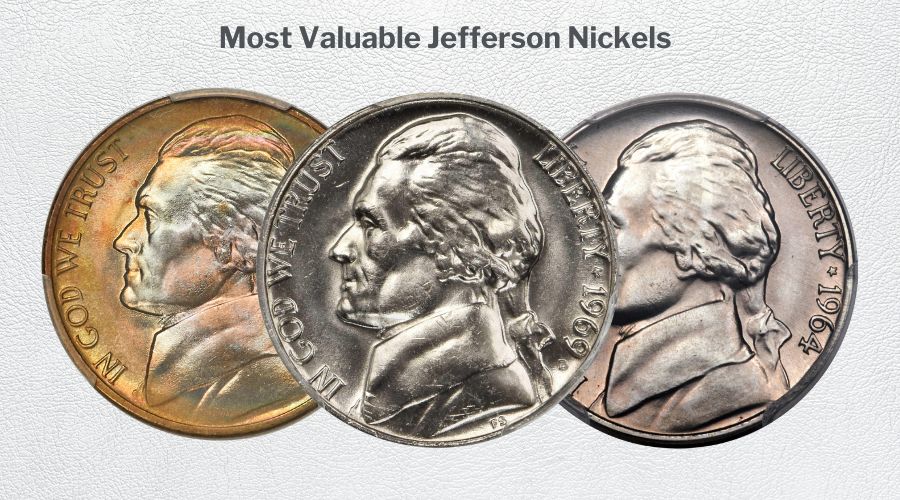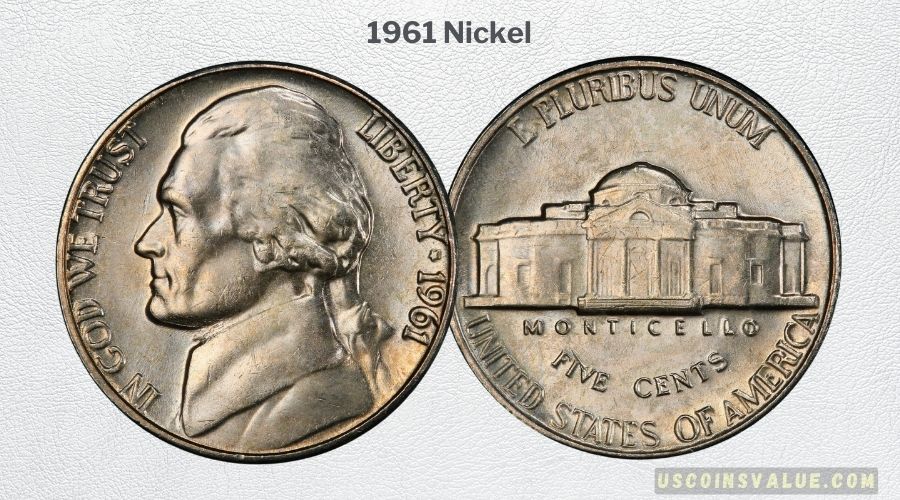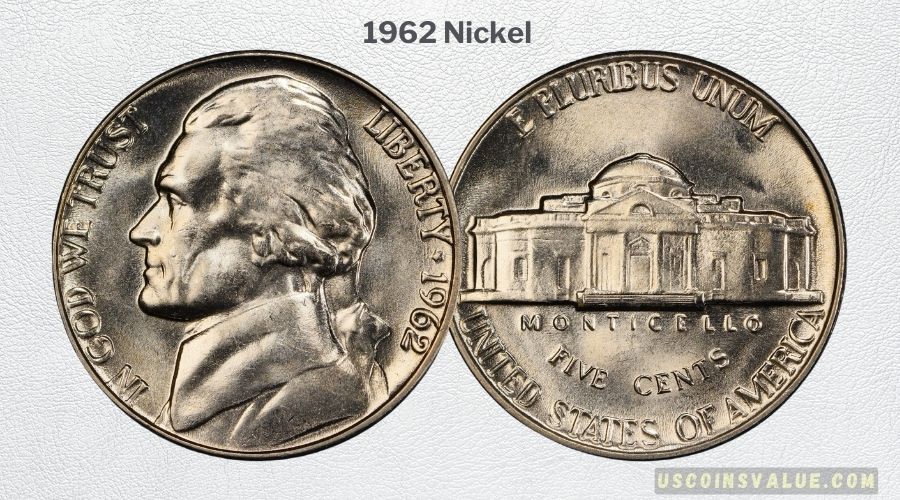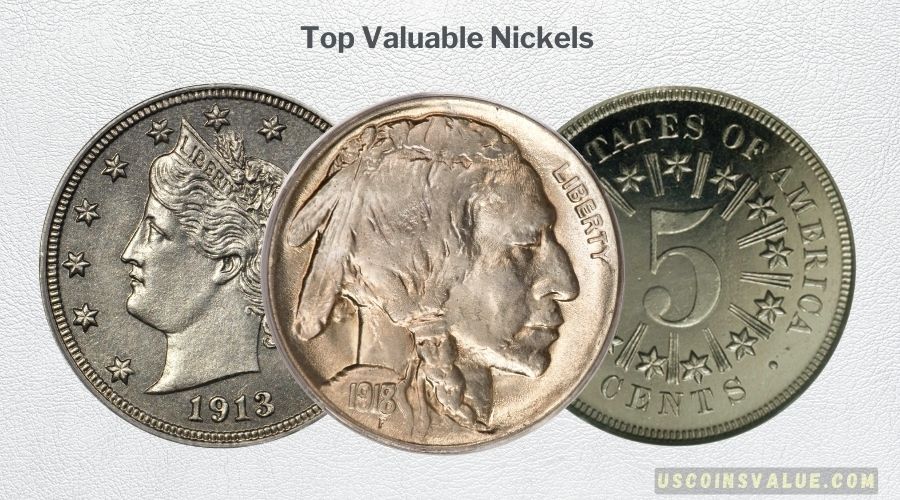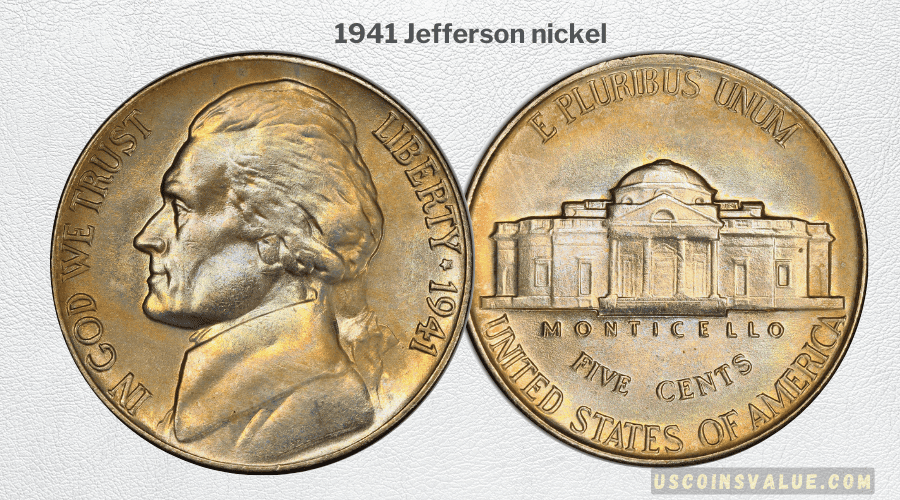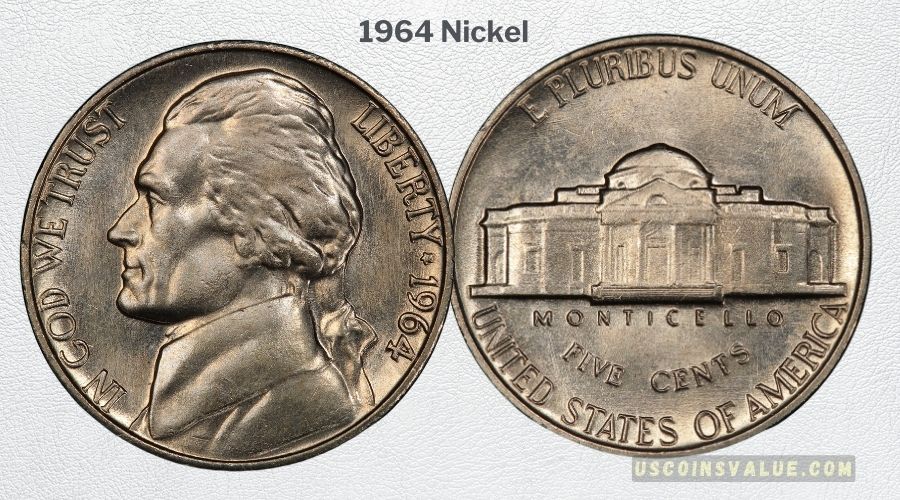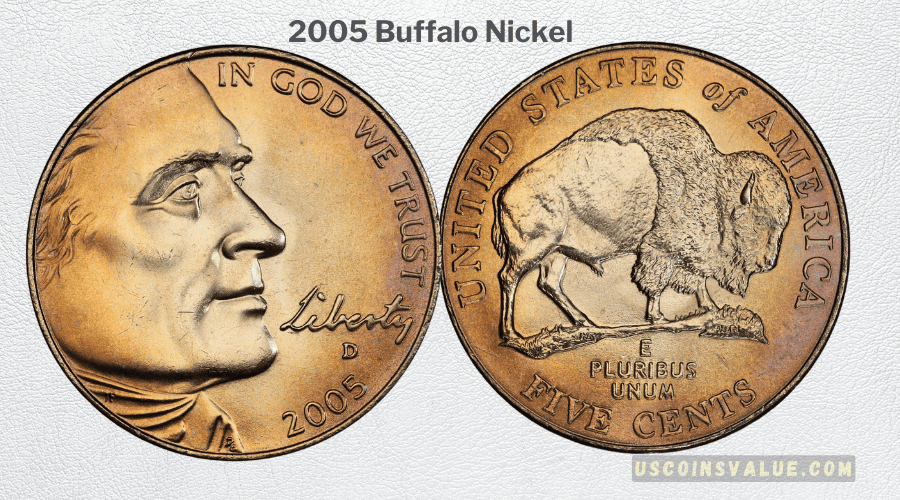The nickel (the five-cent coin) was first minted in 1866 and is still used today with a face value of $0.05. However, the five-cent coin did not start as a nickel.
History of Nickels
The first five-cent coins, called ‘Half-Dimes’, were produced between 1794 and 1873. They were made of silver metal and had a similar face value of $0.05.
However, precious metals became expensive over time, and the U.S. Mint had to develop alternative compositions to reduce costs.
In 1866, the U.S. Mint produced a new five-cent coin with a 75% copper and 25% nickel composition. The nickel composition distinguished the new currency from the older Half-Dimes. People referred to it as the ‘Nickel’ to differentiate the two; thus, the name stuck.
Below are the four different types of nickels throughout U.S. history:
- Shield Nickel (1866 – 1883): Nickel’s first design featured a shield in the obverse and a reverse with a large ‘5’ surrounded by thirteen stars.
- Liberty Nickel (1883 – 1913): A classical design with Liberty on the obverse and a Roman numerical ‘V’ surrounded by a wreath on the reverse.
- Buffalo Nickel (1913 – 1938): A design featuring a Native American profile on the front and a buffalo (bison) on the reverse.
- Jefferson Nickel (1938 to Date): The current nickel design honoring President Thomas Jefferson with his profile on the obverse and Monticello, his plantation, on the reverse.
Each type has had varying sub-designs. For example, the Jefferson Nickel has undergone five different design iterations, from the original 1938 design to the Westward Journey design of 2004-2005 and the current ‘Return to Monticello’ (2006 to Date) design.
Composition
The Mint altered the composition of nickel coins only once throughout its history.
The original 1866 Shield Nickel up to the 1942 Jefferson Nickel comprised 75% copper and 25% nickel. However, during World War II, nickel became a critical resource, leading to a temporary change in composition. From mid-1942 to 1945, nickels were minted with a silver alloy (56% copper, 35% silver, 9% manganese) to conserve nickel for the war effort.
Post-war, the nickel reverted to its original composition.
Value of Nickels Today
It currently costs more than 7 cents to make one nickel. Inflation has reduced the coin’s intrinsic value, but nickels can be extremely valuable in the collector’s market, depending on the type.
The Buffalo Nickel, featuring the bison image, stands out as a collector’s favorite since it was the first coin to feature an animal apart from an eagle, a unique status the coin held from 1913 until 1999.
The most valuable nickels with the highest recorded sales include the 1916 Buffalo Nickel (DDO), valued at $144,593; the 1918-D Buffalo Nickel (8 Over 7), worth more than $58,000; and the 1880 Shield Nickel, worth more than $28,000.
Our detailed blog posts cover all nickels, including their design, errors, value, and trends in the collector’s market. Explore our comprehensive guides to learn more about each type.

